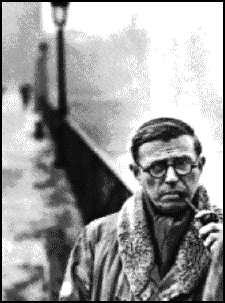Are the Arts?
John Carey
(Oxford)
 It must be borne in mind that most critics are men who have not had much luck and who, just about the time they were growing desperate, found a quiet little job as cemetery watchmen. God knows whether cemeteries are peaceful; none of them are more cheerful than a library. The dead are there; the only thing they have done is write. They have long since been washed clean of the sin of living, and besides, their lives are known only through other books which other dead men have written about them.
It must be borne in mind that most critics are men who have not had much luck and who, just about the time they were growing desperate, found a quiet little job as cemetery watchmen. God knows whether cemeteries are peaceful; none of them are more cheerful than a library. The dead are there; the only thing they have done is write. They have long since been washed clean of the sin of living, and besides, their lives are known only through other books which other dead men have written about them.What Good are the Arts? is one of those arty books that gets heavily advertised in the New Yorker and the TLS and at all the other watering-holes where the litterati gather to wet their whistles. But the pretentious question is just that: pretentious.
What, indeed, is art? Well, for some of us, it could be the Cezanne card players on the wall of the Barnes Foundation or the Chrysler Building in Manhattan or Bach's Cantata #188. Or it's Keats' "Grecian Urn" or Henry Purcell's "Sound the Trumpets" or The Great Gatsby or early Louis Armstrong or Riyuku's River Merchant's Wife or Mont Saint-Michel or Don Quixote or Schubert's Die Winterreise.
 The trouble-makers have disappeared; all that remains are the little coffins that are stacked on shelves along the walls like urns in a columbarium. The critic lives badly; his wife does not appreciate him as she ought to; his children are ungrateful; the first of the month is hard on him. But it is always possible for him to enter his library, take down a book from the shelf, and open it. It gives off a slight odour of the cellar, and a strange operation begins which he has decided to call reading.
The trouble-makers have disappeared; all that remains are the little coffins that are stacked on shelves along the walls like urns in a columbarium. The critic lives badly; his wife does not appreciate him as she ought to; his children are ungrateful; the first of the month is hard on him. But it is always possible for him to enter his library, take down a book from the shelf, and open it. It gives off a slight odour of the cellar, and a strange operation begins which he has decided to call reading.
What art ain't is this John Carey laboring mightily with all those high-falutin' words to tell us what art is, along with a diaphanous analysis that could drive you or me or a poor reviewer potty: "Perhaps the most evident drawback to the evaluative procedure he recommends," says Carey, referring to scientist Edward O. Wilson,
- is that our discussions of art and literature habitually range into many subtle and recondite areas of interpretation that could not conceivably be reduced to identifying the epigenetic rules that a work obeys.
With this kind of hoity-toit language, one might be tempted to use What Good Are the Arts? as a doorstop, but it is only thick and gummy in the logic department. It's just not heavy enough to be useful for anything else.
However, there are quotes. Some of them are so on-target that you may be thinking that they are created from whole cloth. The three here (top, middle, and bottom of page) are attributed to Jean-Paul Sartre. This is hard to believe because I can't remember that particular philosopher ever writing with such clarity. The whole, quoted, according to Carey, from What Is Literature, is a corking rebuff to self-conscious critics. Especially those who write Mickey Mouse books about aht spelled with a capital "A."
 Written by a dead man about dead things, the book no longer has any place on this earth; it speaks of nothing which interests us directly. Left to itself, it falls back and collapses; there remain only ink spots on musty paper. And when the critic reanimates these spots, when he makes letters and words of them, they speak to him of passions which he does not feel, of bursts of anger without objects, of dead fears and hopes.
Written by a dead man about dead things, the book no longer has any place on this earth; it speaks of nothing which interests us directly. Left to itself, it falls back and collapses; there remain only ink spots on musty paper. And when the critic reanimates these spots, when he makes letters and words of them, they speak to him of passions which he does not feel, of bursts of anger without objects, of dead fears and hopes.